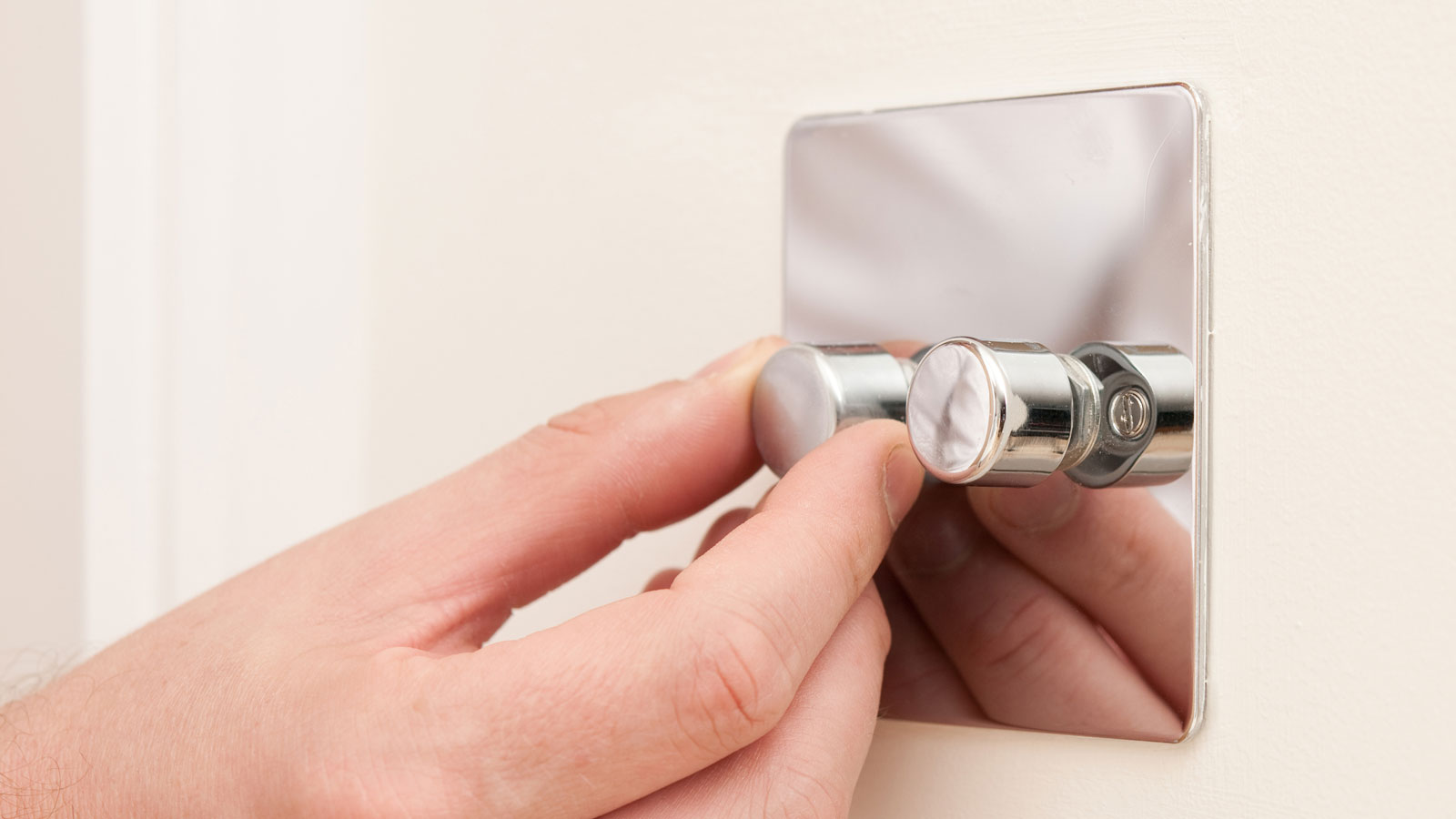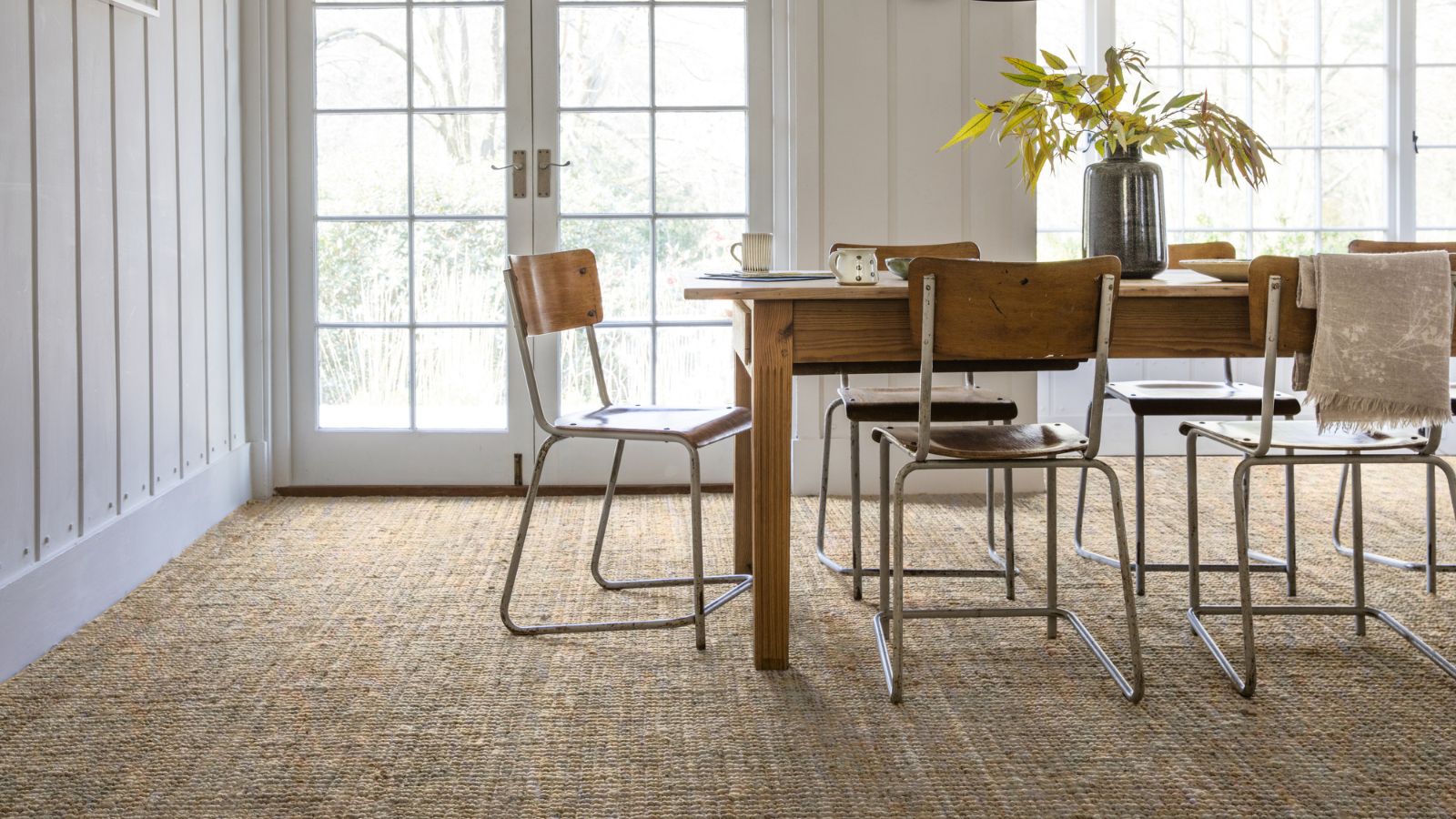Can I install a dimmer on any type of light? Here's an electrician's advice
Pairing the right dimmer switch and bulb is key. Here one expert explains the options, how to match the right bulb with the right switch, and what to avoid

Can I install a dimmer on any type of light? This is a smart and sensible question to be asking if you're renovating your home or simply giving a room a refresh and looking to add a little ambience. Will a dimmer switch work with my current light system? Will I need to replace the bulbs? What type of dimmer switch do I need?
Beyond these straightforward questions, there are more. Will I need to do any rewiring? How much are rewiring costs if any is needed? Typically you shouldn’t need to rewire, more importantly you'll need switches and bulbs that are compatible.
Here you can find the answers to these questions to help make sure you have the right set up for your room.
Are all light bulbs dimmable?
The simple answer is no. So if you want to install dimmable lights it's important to know which type of switches and bulbs are best for the job. David Miloshev, certified electrician with Fantastic Services, reveals that: “There are specific dimmer switches for light bulbs, not all light bulbs are compatible with dimmer switches.”
Here David lists the type of lights that work with dimmer switches and explains why.
- Incandescent light bulbs work by running an electric current through a wire filament. This current warms the filament and makes it glow, creating light. Incandescent light bulbs are typically dimmer-friendly because they work well with any dimmer switch.
- Halogen lights are similar to incandescent bulbs because both types produce light when the filament is sufficiently heated. They are typically compatible with dimmable switches, and they can also provide strong light.
- Compact fluorescent lights Modern CFL lights specifically function well with dimmer switches and they last longer than a traditional incandescent light bulb. But not all are compatible. To find out if the CFL you have is compatible with a dimmer switch, locate the indicator that is usually on the packaging of the bulb. Or, ask the retailer you are buying from. They are an excellent energy-saving option if you dispose of them and recycle them properly.
- Light-emitting diodes (LEDs) Not all LED lights are dimmable, but it’s very easy to find a suitable LED light that’s compatible with a dimming system. The models of dimmable LED bulbs usually can provide smooth dimming from up to 100% to as low as 0.5%. However, this will vary between different types of dimming systems. When you’re choosing LED bulbs to match your dimmer switch, make sure that their packaging indicates that they are dimmable.

David Miloshev is an appliance technician and certified electrician. He has worked with Fantastic Services for over five years and he has the skills and knowledge to diagnose and fix a wide array of appliance issues.
How do I know if a light bulb is dimmable?
There is a simple solution to the discovering if a bulb is dimmable as Miloshev explains: “The best and most secure way to know if a light bulb is dimmable is to check the packaging and see if it states that the product you’re buying is compatible with a dimmable switch. Usually, it’s indicated with a label 'DIMMABLE'.”
Which dimmer switch should I use?
Which type of dimmer switch will you need? Which works best with which bulb? Here Miloshev gives an insight into the different dimmer switches available.
- Universal dimmer switches, like this BG Electrical Single Dimmer Intelligent Light Switch from Amazon, are designed to control halogen, incandescent, CFL and LED light bulbs. They provide smooth start-up, full-range dimming, and prevent flickering and fluttering.
- Halogen dimmer switches are made to specifically control halogen bulbs, but they’re also compatible with incandescent bulbs. However, they can’t control LED and CFL light bulbs.
- Fluorescent dimmer switches can only control fluorescent fixtures which have dimming transformers.
- Electronic low-voltage dimmer switches are also known as ELV dimmer switches. These types of dimmers can control ELV transformers and dimmable LED power supplies such as the ones used in LED stripes positioned under cabinet lighting.
- Magnetic low-voltage switches also known as MLV lights are larger as well as heavier than ELV ones. MLV dimmer switches are compatible with lights which usually have magnetic low voltage.
What happens if you pair a dimmer switch with a non-dimmable bulb?
“Besides the right light bulbs, it’s also important to think about the right dimmer,” shares Miloshev. “It’s key to pick the dimmer wisely because not all of them can control all types of bulbs.”
So what happens if you try to pair a dimmer switch with an incompatible bulb? “Pairing incompatible dimmers and bulbs will often result in the lights only fluttering and flickering, starting slowly, providing inconsistent illumination, a limited dimming range or complete failure to turn on,” says Miloshev.
Bring your dream home to life with expert advice, how to guides and design inspiration. Sign up for our newsletter and get two free tickets to a Homebuilding & Renovating Show near you.
But there’s more. “Additionally, if the two are incompatible, it can cause damage to both the light bulb and the dimmer switch, which can result in the need for replacements and additional expenses. To prevent this, it’ll be necessary to know the different features of the different types of dimmer switches so the one you choose is compatible with the light bulb you intend to use.”
FAQ
What are common issues with LED dimmable lighting and switches?
If you are using a dimmer switch with LED dimmable lighting there are a few issues that you need to be aware of, as Miloshev shares.
- Overheating This isn't exclusive to LED lighting, but one problem, as any type of dimmable light bulb can overheat or get overloaded.
- Dropping out This happens when you’re trying to dim the LED lighting down and the light suddenly cuts out before you can slide all the way to the bottom of the switch.
- Popping on This issue is the opposite of dropping out and it happens when you're sliding the dimmer switch on to increase light levels but the LED light suddenly turns on at a brighter level than you want.
- Dead travelling This happens when the LED light doesn’t respond to the adjustments you're making on the dimmer switch for certain sections of the dimming scale.
- Ghosting This happens when the LED lights have been dimmed all the way down, but they still continue to emit a little light.
- Flickering This is a rapid, intermittent pulsing of the LED lights when they’re paired with the dimmer switches.
If you are experiencing issues with LED lights the first thing you need to do is check that you have the right bulb to go with the dimmer switch. Check that the bulb has DIMMABLE on the packaging. If it does, is it compatible with your dimmer switch? Check that its suitable for LED lights. If you have the right switch and right bulb the switch could be faulty. Replace and test.
If you're renovating your home, or simply updating some of the lighting or electrics, then check out our electrics: the basics guide. Many tasks will need be undertaken by a Part P-qualified electrician. That said, there are some smaller jobs, such as changing a light fitting, which you can undertake yourself if you're a competent DIYer.
Steve Jenkins is a freelance content creator with over two decades of experience working in digital and print and was previously the DIY content editor for Homebuilding & Renovating.
He is a keen DIYer with over 20 years of experience in transforming and renovating the many homes he has lived in. He specialises in painting and decorating, but has a wide range of skills gleaned from working in the building trade for around 10 years and spending time at night school learning how to plaster and plumb.
He has fitted kitchens, tiled bathrooms and kitchens, laid many floors, built partition walls, plastered walls, plumbed in bathrooms, worked on loft conversions and much more. And when he's not sure how to tackle a DIY project he has a wide network of friends – including plumbers, gas engineers, tilers, carpenters, painters and decorators, electricians and builders – in the trade to call upon.

